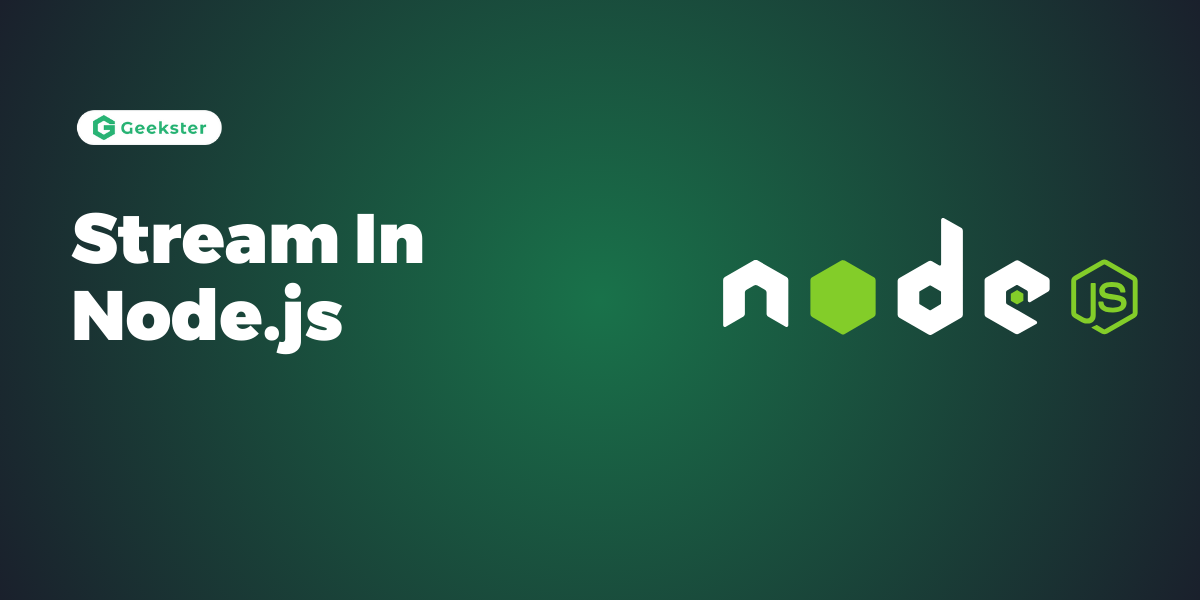Introduction
Stream in Node.js is providing a mechanism for reading or writing data continuously, piece by piece. Stream in Node.js enable efficient processing of large datasets, enhanced performance, and improved memory utilization. In Node.js, streams are instances of Event Emitter that allow reading from or writing to a continuous flow of data.
What are Streams?
Streams are objects that facilitate reading data from a source or writing data to a destination in a continuous manner. Instead of loading the entire data into memory, streams process data in chunks, allowing for more efficient memory utilization and performance improvements, especially with large datasets.
Features
1. Readable Streams
Readable streams represent a source of data from which data can be read asynchronously. Examples include reading from files, HTTP requests, or data coming from databases.
2. Writable Streams
Writable streams represent a destination for data to be written asynchronously. Examples include writing to files, HTTP responses, or data sinks such as databases.
3. Transform Streams
Transform streams are a special type of duplex stream that can modify or transform the data as it is being read or written. Examples include compression or encryption streams
4. Duplex Streams
Duplex streams represent both a readable and writable stream. They allow for bidirectional data flow, enabling simultaneous reading and writing.
Advantages of Streams in Node.js
1. Efficiency
Stream in Node.js enable efficient processing of large datasets by processing data in chunks, rather than loading the entire dataset into memory. This reduces memory consumption and improves performance, especially when dealing with large files or network data.
2. Scalability
Streams facilitate asynchronous processing, enabling applications to handle multiple concurrent operations efficiently. This enhances scalability and responsiveness, making streams ideal for building high-performance, real-time applications.
3. Integration with Ecosystem
Streams are an integral part of the Node.js ecosystem, seamlessly integrated into various modules and libraries. They are widely used in modules such as HTTP, file system, and database drivers, enabling developers to leverage streams across different domains.
Examples of Streams in Node.js
1. Reading from a File
const fs = require('fs');
const readStream = fs.createReadStream('input.txt');
readStream.on('data', (chunk) => {
console.log('Received chunk:', chunk);
});
readStream.on('end', () => {
console.log('End of file reached');
});
2. Writing to a File
const fs = require('fs');
const writeStream = fs.createWriteStream('output.txt');
writeStream.write('Hello, world!\n');
writeStream.end();
writeStream.on('finish', () => {
console.log('Write operation completed');
});
Conclusion
Streams are a powerful feature of Node.js, enabling efficient processing of data in a continuous flow. Whether reading from files, writing to network sockets, or transforming data on-the-fly, streams provide a versatile and scalable mechanism for handling data-intensive operations. By leveraging streams, developers can build high-performance, real-time applications with ease, while optimizing resource utilization and enhancing user experiences. As Node.js continues to evolve, streams will remain a cornerstone technology, empowering developers to tackle complex data processing tasks with confidence and efficiency.
Frequently Asked Questions
Streams are ideal for processing large datasets or handling data in a continuous flow, such as reading from files, processing network data, or performing real-time data transformations.
Yes, streams in Node.js support both text and binary data, making them suitable for handling a wide range of data types, including images, audio, video, and other binary formats.
Yes, Node.js provides APIs for creating custom Readable, Writable, Transform, and Duplex streams. Developers can extend these classes to implement custom stream behavior tailored to their specific use cases

